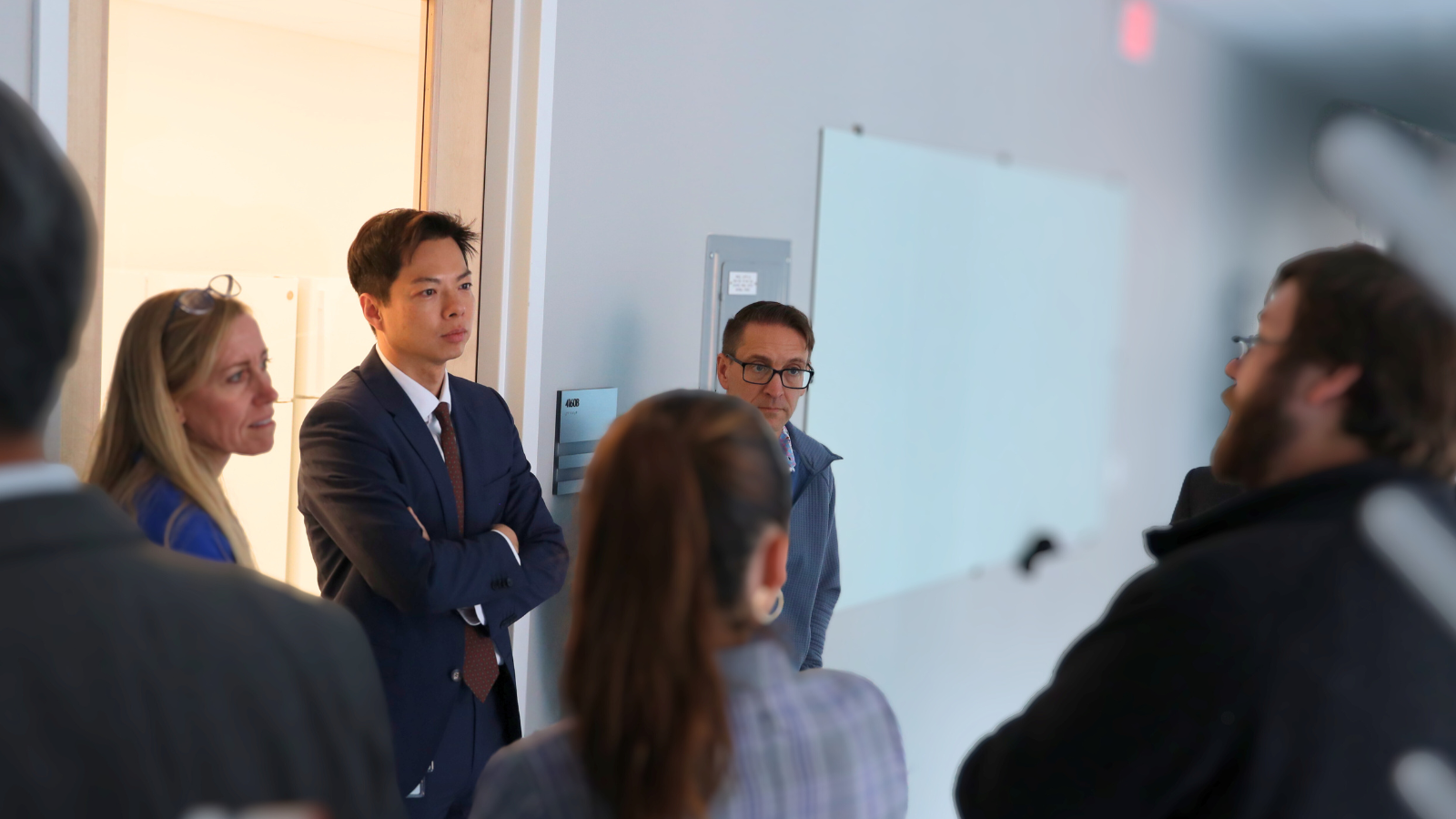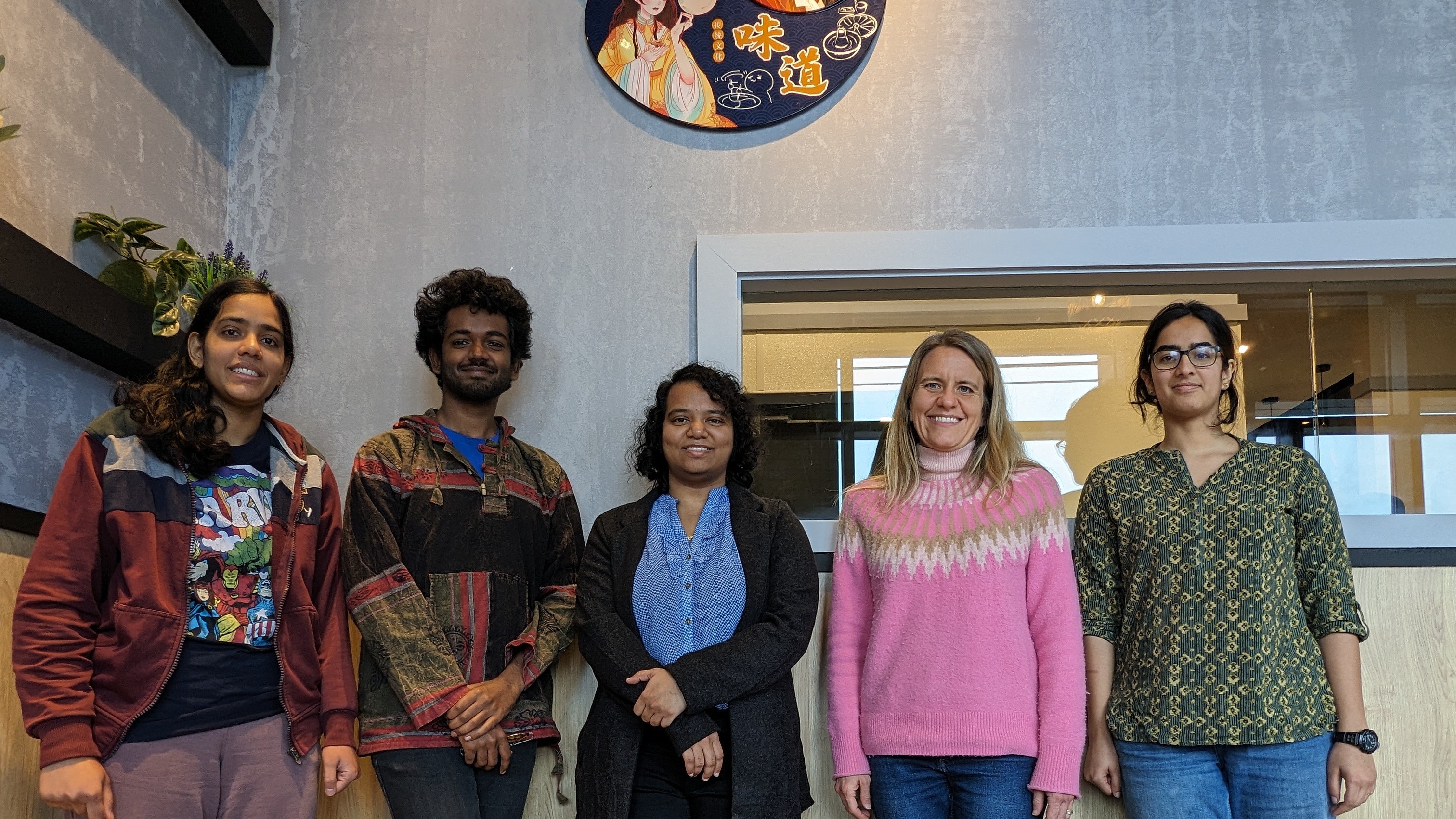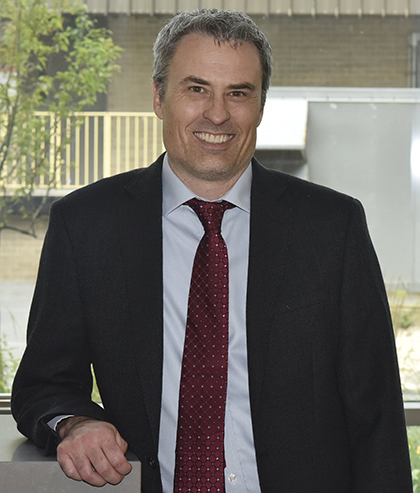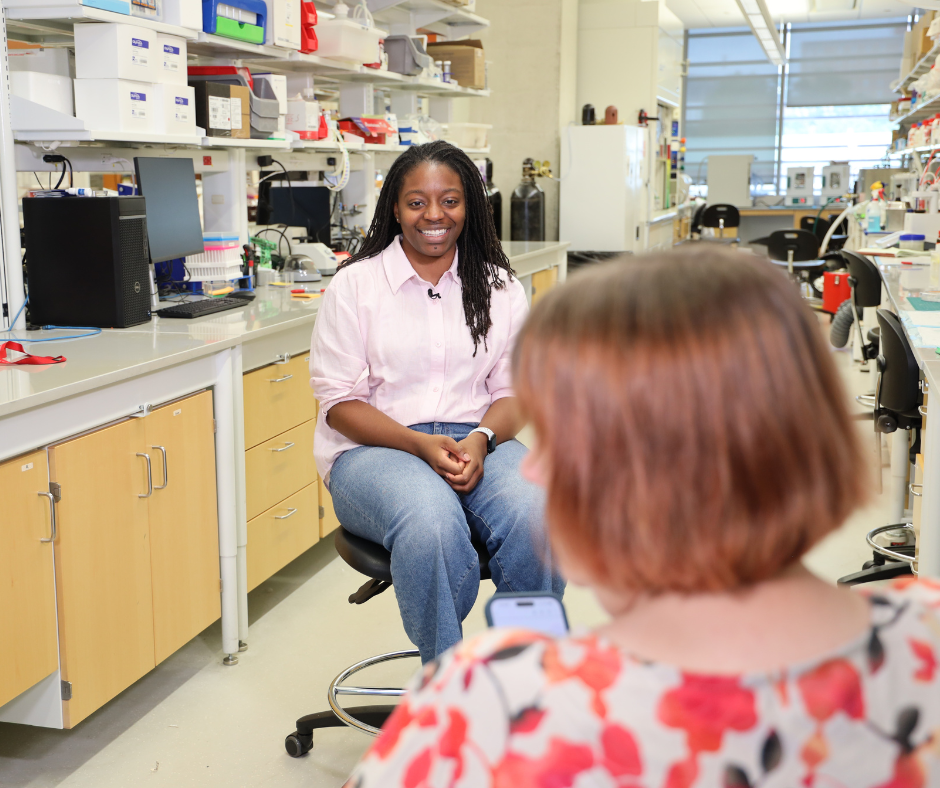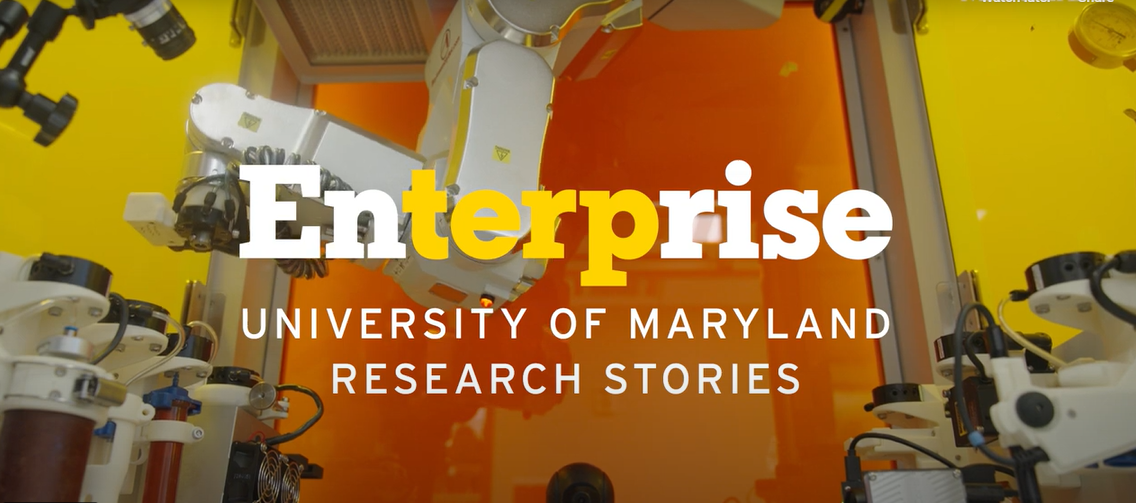News Story
Fischell Fellow Designs New Diagnostic Technologies
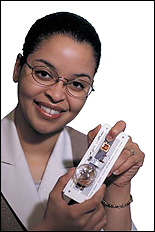
Angela Hodge Miller, the first recipient of the Fischell Fellowship in Biomedical Engineering, is developing chemical sensors that could accelerate the detection of toxins like anthrax.
"The victims of anthrax exposure at the Brentwood postal facility could have known days ahead of time that they had been exposed. The hospital wouldn't have misdiagnosed them as having the flu."
Angela Hodge Miller
More specifically, Hodge Miller refers to the anthrax spores sent through tainted letters to select members of Congress. "At least one building in the District of Columbia continues to be a threat to anyone who enters," she asserts.
Hodge Miller hopes to accelerate the toxin detection process through her design of a multi-sensor, self-testing fluid analyzer that will enable a diagnosis to be made more quickly and more efficiently. The device utilizes the very latest methodology, Systems-on-a-Chip, that incorporates multiple technologies on a single microchip. In Hodge Miller's case, testing procedures are created on the same chip with biosensors, a strategy that could eliminate errors associated with standard chip testing mechanisms and at the same time simplify the self-diagnostic process.
Her research and her ability to "think outside the box" have earned Hodge Miller the honor of being named the first recipient of the Fischell Fellowship in Biomedical Engineering.
The fellowship, designed to go beyond scholarly achievement to produce new medical systems and devices to treat disease, was established through a $1.25 million gift from inventor, engineer and physicist Robert E. Fischell.
In recent years, explains Hodge Miller, who is pursuing her Ph.D. in electrical engineering, there has been a strong effort by researchers to use engineering principals to solve problems related to the determination of impurities in biological fluids. However, many chemical sensors can not be applied to a broad spectrum of fluids.
Hodge Miller is focusing most of her research on developing chemical sensors capable of performing selective determination of compounds in a variety of fluids, such as blood, urine and saliva. "In addition to being useful in the clinical analysis process, the array of biosensors I develop will be capable of performing on-chip, real-time, self-diagnostics," she says.
Currently, medical analysis for toxins involves going to a specialist, clinic or hospital, providing a sample and waiting up to two weeks for the results—a time-consuming and often costly process. "This technology will allow individuals and general practitioners to perform analyses in their homes or offices," she says. "The early detection method will aid in preventing the dissemination of false information to the patient and could potentially save lives." For example, the process can be fine-tuned to detect specific toxins. "The victims of anthrax exposure at the Brentwood postal facility could have known days ahead of time that they had been exposed. The hospital wouldn't have misdiagnosed them as having the flu."
"By applying specific attachment chemistry to the surface of the sensor, you can isolate and identify a target protein or DNA," offers Hodge Miller. "With the right chemistry, you can detect a specific strain of anthrax or smallpox."
Hodge Miller received her bachelor's degree in electrical engineering from the Clark School in 1996 and her master's degree in electrical engineering from Stanford in 1998. She has interned at various public and government institutions and would someday like to establish her own biomedical engineering consulting firm. "My interest is in working in areas in which I can be creative while meeting the needs of the community at large," she says.
Published May 1, 2003
